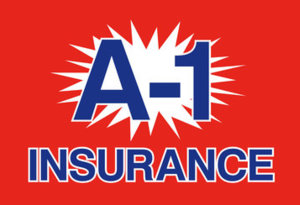One of the most frequent inquiries A1 Insurance in Kasas City receives is regarding automobile liability insurance policies. Policyholders want to know what they cover, how claims are determined and paid, and advice regarding issues between repair facilities and automobile liability insurance companies. This is a summary of information, regulations and state law as it relates to the payment of claims and payment to repair facilities.
Types Of Claims
There are two types of claims that can be made under an automobile insurance policy: either a first-party claim or a third-party claim. First-party claims are claim filed by the policyholder, such as Uninsured Motorists (UM) coverage, medical payments and collision/comprehensive coverages. Third-party claims are claims where the policyholder is at fault, such as liability and property damage coverages. It is important to note that an insurance company has a greater duty to the claimant in third-party claims than in first-party claims.
Steering
An insurance company may not dictate to you where you must have your repairs made. An insurance company may recommend that repairs be made at a designated repair facility where they have a contractual relationship; however, payment of the claim may not be conditioned on the use of a particular repair facility. Also, an insurance company cannot refuse to pay a claim because the repairs were made at a particular repair facility.
Measure of Damage
The damages that may be recovered under an automobile claim is defined in the policy and is often the actual cash value of the property immediately prior to the loss, or the amount necessary to properly repair the damage.
Most policies will provide for two (2) different manners for recovery by the policyholder:
- Insurance company pays for the loss; or,
- Insurance company repairs the vehicle.
Policyholders are encouraged to read the policy to clearly understand what the insurance company will pay under the policy. Any dispute regarding whether the insurance company has paid in accordance with the policy is a question of fact. A question of fact is to be determined by the finder of fact, which is either a jury or a judge.
Amounts to be Paid
By law, the most an insurance company shall be required to pay for the repair of the vehicle or repair or replacement of the glass is the lowest amount that such vehicle or glass could be properly repaired or replaced by a contractor or repair shop within a reasonable geographical or trade area of the insured. Most insurance policies actually provide for greater payment than what is statutorily required by providing that the insurance company will pay the median or average amount to properly and reasonably repair or replace within the policyholder’s geographical or trade area.
In preparing an estimate, an insurance company will base the amount it will cost to properly repair the vehicle on the insurance company’s set hourly rate pursuant to policy terms. This estimate will be provided to the policyholder before repairs are made. The insurer’s hourly rate must conform to statutory law.
A policyholder may choose to have the repairs made at a repair facility that charges more than what the insurance company has agreed to pay. Insurance companies do not set repair facility hourly rates so there may be a difference between the two rates. In that instance, either the repair facility will agree to make the repairs for the amount in the insurance company’s estimate or the policyholder will have to pay for the difference.
Policyholders should be aware of and address any potential differences between the insurance company’s and the repair facility’s estimate before allowing the repair facility to begin to repair the vehicle.
If additional damage is discovered in the repair process, the insurer will inspect the vehicle before agreeing to the repairs. After it is determined these repairs are needed and covered under the policy, a supplemental check will be issued to the repair facility to cover these additional costs.

